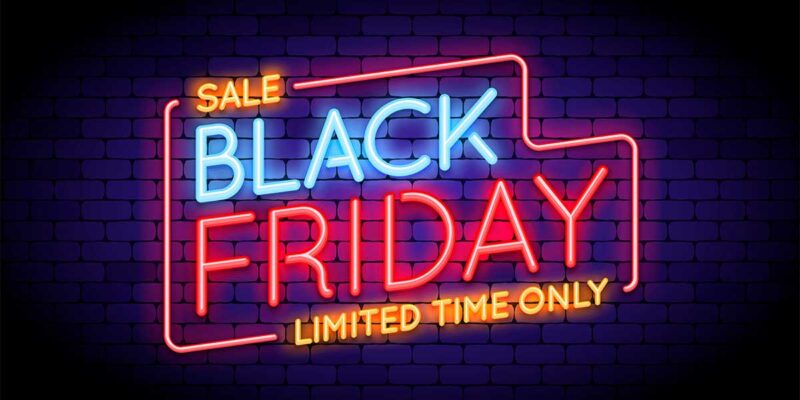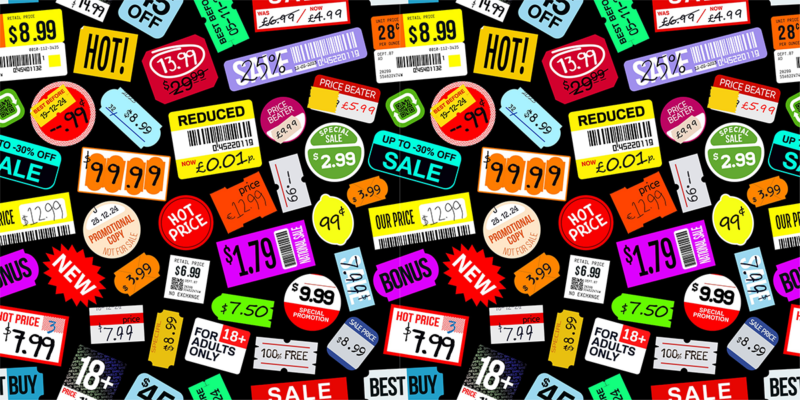AVPhenom’s 5 Lessons in Sales Etiquette
 If you didn’t see my previous post, this is a retread of five blogs I wrote in 2011 about Sales Etiquette.
If you didn’t see my previous post, this is a retread of five blogs I wrote in 2011 about Sales Etiquette.
I was inspired by Lee Distad’s recent blog on manners so I thought I’d share these lessons for anyone who may be able to get something out of them.
Sales Etiquette
I don’t know exactly how far back to go.
My mom is from Southeastern Tennessee. The South is a culture of honor and it is deeply rooted in respect for elders and in manners. Obviously, this means these were values that were promoted by my parents throughout my childhood. But there is more than etiquette than respect and manners. It is easier to practice etiquette when these conditions preexist, but they are not etiquette themselves.
Tact is defined as a keen sense of what to say or do to avoid giving offense; skill in dealing with difficult or delicate situations. But is tact etiquette?
The answer is no. Etiquette is not just about acting with tact, but in doing something else.
It is acting with respect, manners, and tact in a strategy that is specifically tailored to or expected by the unique audience at hand.
So how do you know the audience’s motivations, needs, wants, etc, as well as how “they” expect you to act. . .
Lesson #1- The Customer is NOT Your Friend. . .Yet
When I was a kid, there were several days in the summers when I would stay with my Grandma and Grandpa in Mesa, AZ. My dad would wake us up at 4:30am, make us get dressed, and drop us off on his way to McDonnell Douglas. We would quietly slip into the living room, my sister would promptly go back to sleep on the couch. I would turn on the TV really low to WGN and watch the Bozo-Puter spit out some numbers so a kid could throw ping pong balls to try and win a Schwinn bicycle in the Grand Prize Game.
We would stay the day with my grandparents and then my dad would pick us up around 3PM on his way home.
Fast forward 20 years and I found myself selling to customers at Shea Trilogy, an active adult community in Peoria, AZ. I’m talking to a “member” (as Shea calls them) about her experience thus far. She tells me that when the pool guy called her the other day, he asked for Jackie. He then says “Jackie, I made a mistake on the paperwork the other day, and I need you and Chuck to come down and sign again next time you are in the area.” This woman looks at me and says, “I said in reply ‘Jackie? I don’t know you. Excuse me?’. We aren’t friends, why is he using my first name?” I realized all the summers with my grandparents really laid down the groundwork for how I could develop quick rapport with folks I was 2 generations removed from.
I already hear some of you saying this is silly, but it falls under etiquette.
You have to understand the generational and cultural differences of your customers, and follow etiquette that conforms to those parameters.
I always start business relationships with Mr. and Ms. followed by the surname. I do it until someone tells me not to. I am not trying to distance myself from the customer and be detached. On the contrary I long for the personal relationship to develop (I mean look, I’m blogging at 2am on a Friday night, I don’t turn down many friends).
I also use ‘sir’ and ‘ma’am’ until at some point, they say “You can call me Bob”, or “My father was ‘sir”.
My thought is I will never offend anyone by starting this way, but starting in the opposite, using first names too early, can cause some issues. It is great to get on a first name basis with your customers, but you need to make sure that the customer is defining when that takes place. Some will put you there right away, and others will make you earn it.
Lesson #2- Follow THROUGH
To quote The Fixx:
“Do what they say, say what you mean.
One thing leads to another.
You told me something wrong, I know I listen too long
But then one thing leads to another.“
What am I talking about???
Let’s go back to something I learned about 13 years ago. People don’t get as upset when things go wrong if you communicate well. I would have nights where I was one of two waiters in a restaurant, I had over 10 tables (most restaurants don’t give waitstaff over 5), and the kitchen was very SLOW. This is a recipe for disaster. . .usually.
The Reality: I made more tips on that night than any I can remember.
How?
I fought the flight reflex. There is nothing more uncomfortable than having people stare at you, knowing exactly what they want. . . food. Most people in this situation disappear in the side station, (where the drinks and trays are located), until the food is ready and then bring it out, avoiding conflict at all costs.
I stayed in the dining room. My visibility let everyone know I was there and ready to respond when the kitchen needed me too. It gave me a lot of time to interact with guests, keep drinks full, apologize for the delay, etc. Was everyone ecstatic? Of course not. The moods ranged from amiable, to indifferent, to annoyed, but, at the end of it all, no one blamed me. No one punished me financially. They all voted with their wallet, and I was deemed the winner.
Communication is a pillar of etiquette.
I defined etiquette in a previous post and included the condition that you are acting in a way the customer expects you to act. With poor communication, you have no way to determine what this is. The customer’s expectation could be baseless, or it could be based on a previous over the top good or bad experience. How do you meet the expectation then?
Set it!
Communicating effectively to educate your customer on what steps will take place, what time frame things will get done in, and when they will hear from you throughout the process is essential. If you provide the guidelines you control the expectation, and once you do that, you ave no excuse not to meet or exceed them.
So follow through is pivotal. Set realistic expectations with the customer and then make the milestones happen on time. If something falls back, call them, and let them know that you “realize you are at a milestone and owe them some information. I also know your time is valuable and it is of the essence as well. I don’t like making these calls, but I wanted to be proactive in letting you know I am a day behind.”
When you make promises keep them, and you will find that over time, you may very well get the same loyalty in return from your clients.
Lesson #3- Follow UP
There is nothing more powerful than good follow up. It is where most people tend to drop the ball. You do your best to earn a customer, you do the work, and then they never hear from you again.
Following up after a sale gives you two ways to earn business.
1) It shows that you have a genuine concern for the work you do, and for the customer’s ultimate satisfaction.
2) It gives the customer a chance to offer feedback.
Number 2 is far more important than number 1. Customer feedback gives you a real chance to get a snapshot of the impression you are leaving. It helps you to improve business processes. However the most important thing it does, is uncover dormant problems.
When I was in the hotel industry, they taught us that the person who complains is your God send. They tell you what is wrong, and give you a chance to fix it. It is the unhappy customer who says nothing and leaves that is your real nightmare. They leave unfulfilled, giving you no real chance to make them feel otherwise, and then tell everyone they know what a bad time they had.
If we had any suspicion that something was not well, we were encouraged to probe. One time in particular, I was working breakfast and a couple came in to eat at 5:30am. I first thought they must be from the east coast and still on that time. However upon asking I found they were from Tempe, where the hotel was located, and were just getting a night away. There was an instant red flag: A couple on a night away doesn’t get up at 5:30am. Upon asking again why they decided to come in early they shared that there was construction in their hall. They were told that the crews didn’t start til 8am when they booked their stay, but this morning, they had started at 5am. They couldn’t get any rest so they got up for breakfast.
The Buttes was a neat place at the time, so I was actually able to comp their room and breakfast right there on the spot without any management approval, etc. Their thought was to empower the employee to handle grievances, as making them repeat a bad event over and over to the management hierarchy only reinforced the bad experience.
The follow up questions caused them to share, and allowed us to do the right thing. Now they may still have a story that they were awaken at 5am, but the end to that is that at breakfast a conscientious employee recognized their potential situation, proactively asked them to share, and then responded immediately to handle the situation as best it could be handled at that time.
I would argue that follow up is probably the most important when you know there may have been a problem. Most people avoid calling customers who they know have had a bad experience and hope that the customer doesn’t call to complain and just disappears. Many times they will, but know they are taking more than their business away from you when they do.
Lesson #4- Assume Nothing
This blog wasn’t really started to debunk sales cliches, but it looks like I am going to do it again anyway.
It is said that you should always “assume the sale”. Acting like the customer already said yes, is supposed to magically make them think that they did. To steal a phrase from our CTO, “Bollocks!” (He’s British)
I had some experience today with a competitor who tried this. My potential client out out a bid to several companies. We were the first to respond (as usual :)). Many others took up to 2 weeks just to return the call. This was a bid by invitation, as the project takes a high level of skill and customization.
So, what did my competition do?
Firm One was non-responsive. They are the same type of firm that complains that the economy is the reason they are losing business no doubt.
Firm Two, still hasn’t provided a number two and a half weeks later, but claim they are interested. Neither of these illustrate the fallacy of “assumption” however they could benefit from my last post on follow up, for sure.
It is Firm Three that is of interest. First of all, they start the conversation by telling the client that it will be $15,000 to talk about the project, (No I didn’t have a fit while typing the 0s, there were 3 of them after the numbers 1 and 5). Maybe that business model works for them sometimes, but in 2011 with the current business climate, maybe not so much.
The kicker comes though with what they did next. They sent a signed contract over via email within an hour for return with signature to get started. To quote the customer, it was “presumptuous”. As a closing technique I never found this helpful, although I worked for a few places that made us live it vehemently. They made us ask questions like “What’s your zip code for shipping?” instead of “Can we do business together?”, etc. The problem was it very seldom worked.
My advice is to stop focusing on the “close” and spend a little more time focusing on the customer and the application. Don’t assume the sale, but follow up in a way that inspires the client to ask if he can make a purchase. People like to buy, they don’t like to be “sold”.
Lesson #5- Say “Thank You”
Did I really have to write this post? You bet!
The common courtesy most of us learned at age 5 is often the most neglected part of sales etiquette. I have seen many folks, after being hired, enter into an entitlement relationship with the customer. Some believe that saying thank you, somehow weakens your position or puts you at a disadvantage in some way physically or psychologically with the customer. It does not.
I start my “Thank You”s very early on in the process. I was taught to hand write a Thank You card after important meetings, even before an agreement has been reached. I typically make this out the day of, so that within 2 days a card arrives at the prospect or clients desk (Thanks Bobby Russo- see I’m thanking the person who told me to thank people :)).
It is amazing how powerful a small handwritten card can be. A great example of this is the “Connector” Roger Horchow in Gladwell’s The Tipping Point (which if you haven’t read, go get it). He sent birthday cards to everyone he ever sat next to on an airplane, and as he traveled a lot, this was a daunting task. It gave him a distinct advantage though, in that if he ever needed anything, these fleeting moments on a plane were set in concrete by the unexpected, and frankly, quite unusual cards that the folks would get every year. When it was time to call upon them for a piece of advice, a favor, and introduction, etc they remembered him. “You’re the guy who sends me a birthday card every year!”
Again, I will skip the full book report and state that if you want to see the power of a card, send one.
The take away is that you need to make a special effort to thank the customer. If you have done everything in the other four pieces of the Etiquette posts, I guarantee that this last act will ensure the customer will be a loyal one for years to come.





